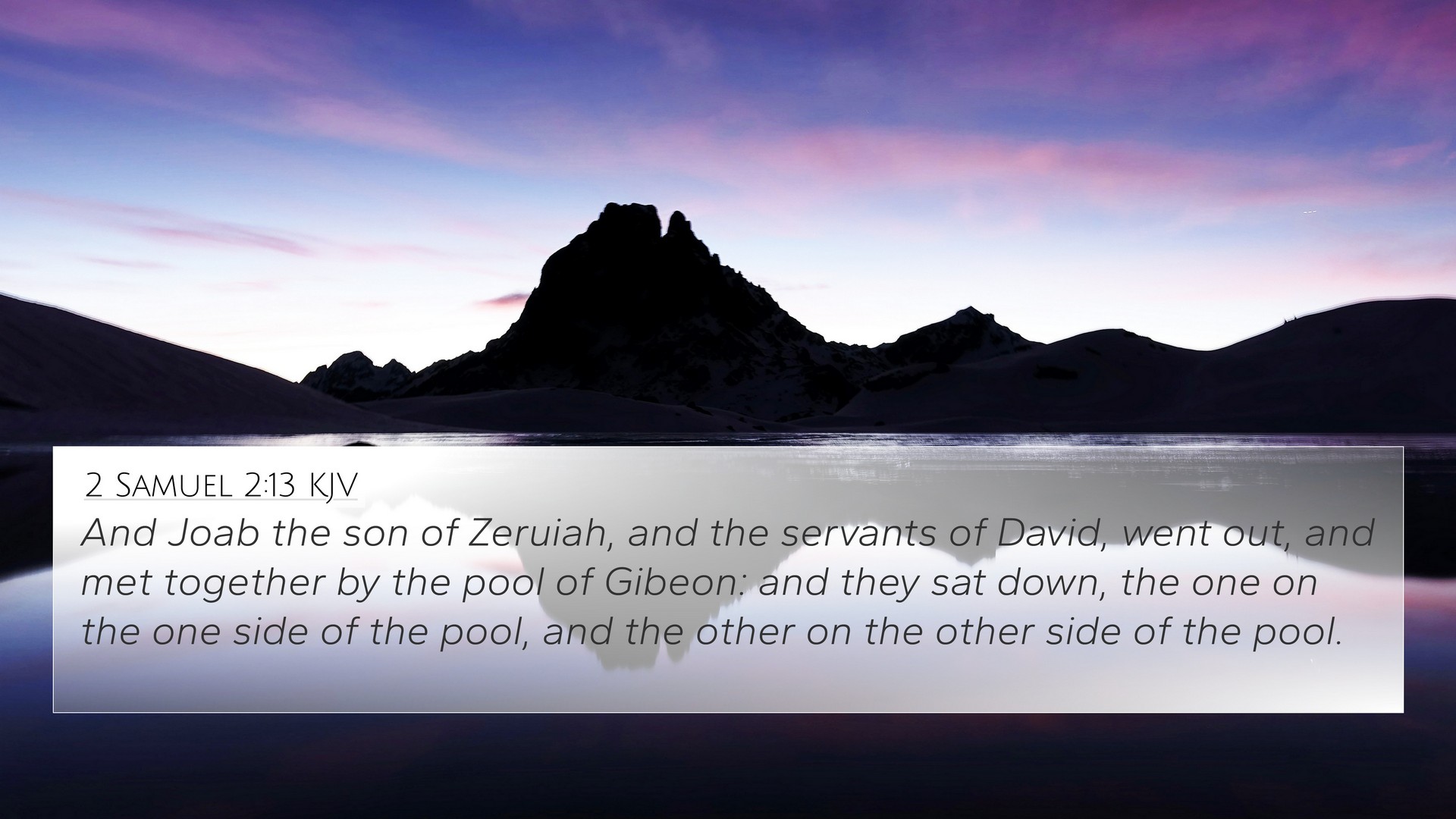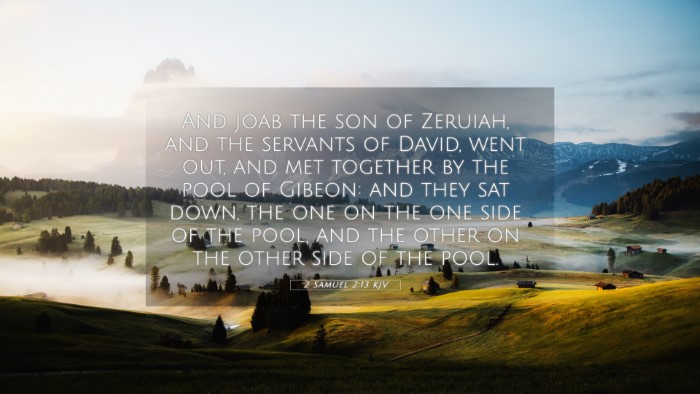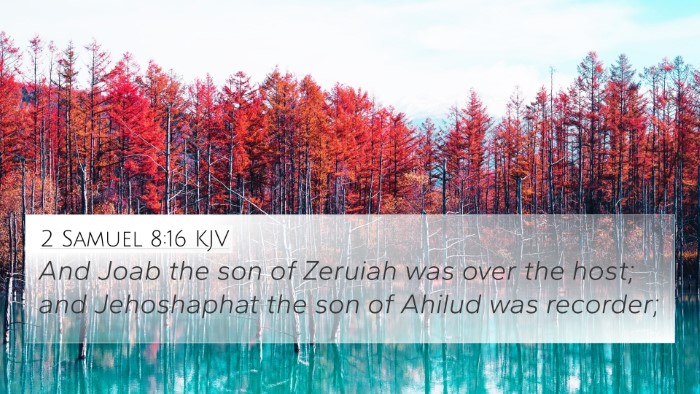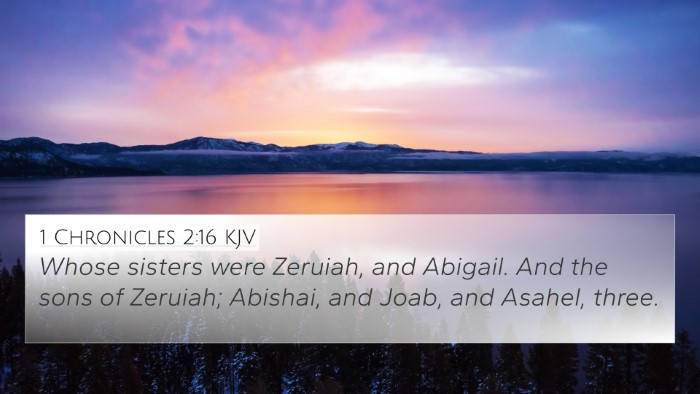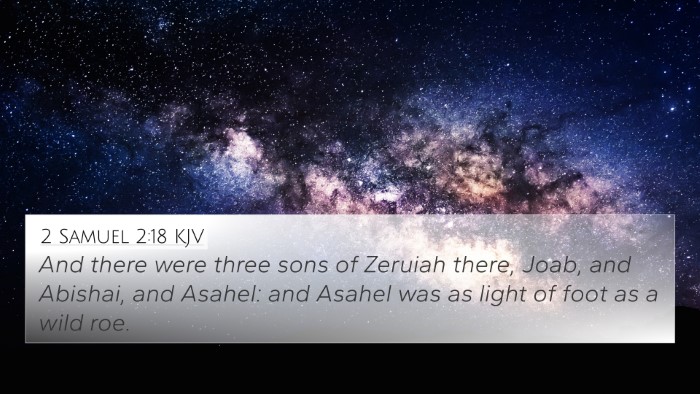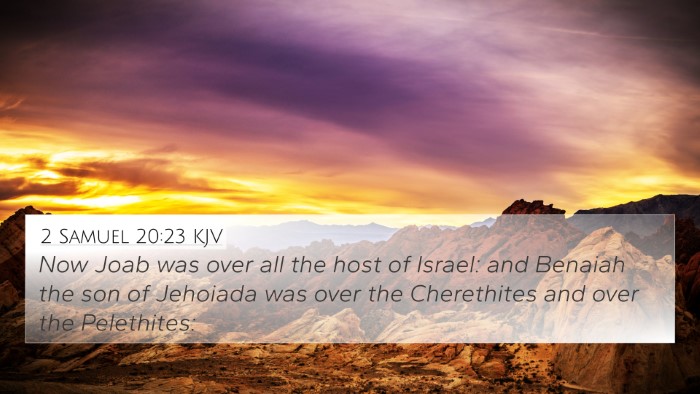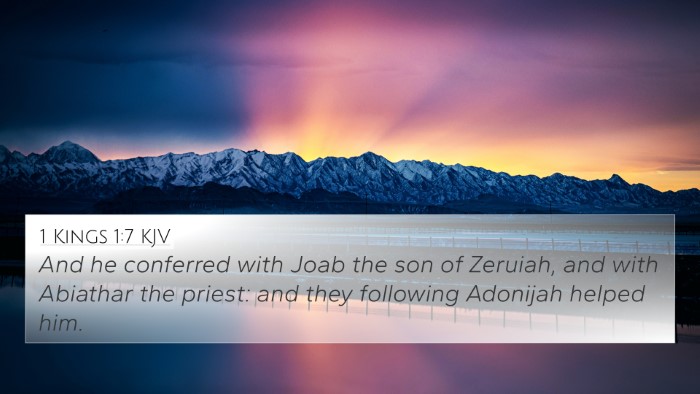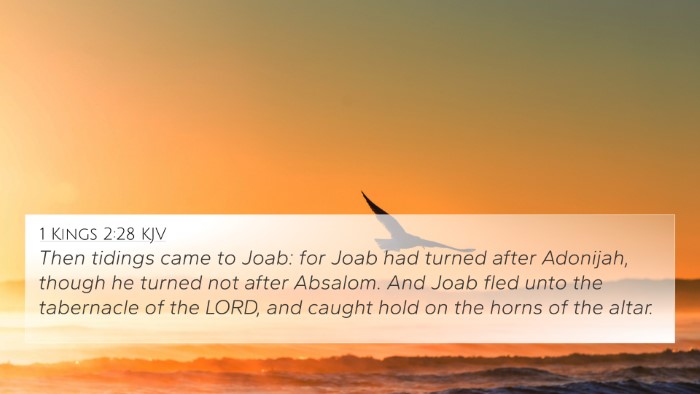Understanding 2 Samuel 2:13
Verse: 2 Samuel 2:13 - "And Abner the son of Ner, and the servants of Ish-bosheth the son of Saul, went out to Mahanaim to meet Joab the son of Zeruiah, and the servants of David."
This verse introduces a key moment of conflict in the narrative of David’s rise to kingship. In the context of this passage, a critical examination reveals the tensions between the house of Saul, represented by Ish-bosheth and Abner, and the house of David, led by Joab. Below is a synthesis of insights from noted public domain commentaries.
Commentary Insights
-
Matthew Henry:
Henry indicates that this event is significant as it highlights the ongoing power struggles following Saul's death. Abner's actions reflect an attempt to retain authority within the remnants of Saul's kingdom. The confrontation sets the stage for further battles, illustrating the theme of civil strife among the Israelites.
-
Albert Barnes:
Barnes notes that Abner, as the commander of Saul’s army, seeks to secure Ish-bosheth’s position against the legitimacy of David’s claim. The geographical location of Mahanaim is also vital; it symbolizes a stronghold for the remnants of Saul’s line, emphasizing the conflict's backdrop.
-
Adam Clarke:
Clarke provides insight into the political dynamics at play, suggesting that Abner’s initiative signifies a deliberate challenge to David’s claim over the unified kingdom of Israel. The meeting between the two factions foreshadows violence and contention, marking the beginning of further discord.
Thematic Analysis
This verse particularly speaks to themes of leadership, loyalty, and civil war. As seen throughout biblical texts, the struggle for power leads to division among God's people. It invites readers to consider how ambition can corrupt and lead to strife.
Bible Verse Cross-References
- 2 Samuel 3:1: "Now there was long war between the house of Saul and the house of David: but David waxed stronger and stronger, and the house of Saul waxed weaker and weaker."
- 1 Chronicles 12:29-30: "And of the children of Benjamin, the kindred of Saul, three thousand: for hitherto the greatest part of them had kept the ward of the house of Saul."
- 1 Samuel 31:2: "And the Philistines followed hard upon Saul and upon his sons; and the Philistines slew Jonathan, and Abinadab, and Malchishua, the sons of Saul."
- Jeremiah 3:6: "The LORD said also unto me in the days of Josiah the king; Hast thou seen that which backsliding Israel hath done? she is gone up upon every high mountain and under every green tree, and there hath played the harlot."
- 2 Samuel 2:8: "But Abner the son of Ner, captain of Saul's host, took Ish-bosheth the son of Saul, and brought him over to Mahanaim;"
- 2 Samuel 4:5-6: "And the sons of Rimmon the Beerothite, Rechab and Baanah, went, and came about the heat of the day to the house of Ish-bosheth, who lay on a bed at noon."
- 2 Samuel 1:10: "So I stood upon him, and slew him, because I was sure that he could not live after that he was fallen: and I took the crown that was upon his head, and the bracelet that was on his arm, and have brought them hither unto my lord."
Connections Between Bible Verses
The interplay between these verses illustrates how the narratives of Saul’s demise and David’s ascendance are inextricably linked. The fidelity of Joab to David is contrasted with Abner's allegiance to Ish-bosheth, emphasizing the territorial and familial conflicts of the time.
Tools for Bible Cross-Referencing
To study such interconnections thoroughly, utilizing a Bible concordance or a cross-reference Bible study system will prove beneficial. These tools can assist readers in exploring the thematic and contextual links between diverse scriptures, deepening their understanding of the text.
Conclusion
2 Samuel 2:13 serves as a pivotal point in the historical narrative of Israel, revealing the complexities of leadership and loyalty amid civil unrest. By understanding the context and examining related scriptures, readers are equipped to grasp the profound implications of this biblical passage and its relevance to broader themes within biblical literature.
As you engage in cross-referencing Biblical texts, consider how this verse not only reflects historical truths but also offers insights applicable to individual lives today.
